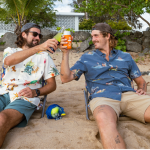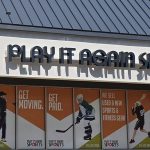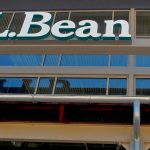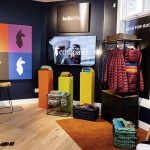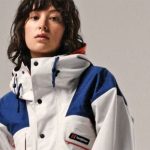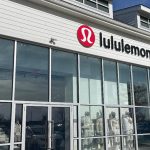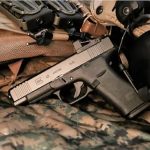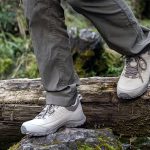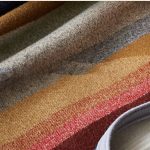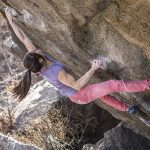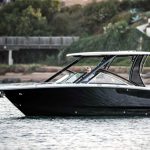Overall sales for the entire winter sport market, including specialty and chain stores, were up 9% in dollars to $348.8 million for the August through October period of 2005, compared to $319.6 million reported last year, according to the SnowSports Industries America (SIA) Retail Audit. Unit sales were up 10%. Sales at specialty ski and snowboard shops were up 10% in dollars compared to last season. In dollars, that translates to $278.5 million in sales compared to $253.6 million in 2004. Unit sales were up from last season 12%.
“Early snow in New England, the Rockies and the Pacific Northwest contributed to the encouraging sales reported at specialty stores across the country. A big factor in the impressive first period were sales of authentic snowsports apparel — softshell parkas, vests and fleece prospered with double digit growth for the August through October period,” said Christine Martinez, market research manager for SIA, the not-for-profit industry trade group that represents manufacturers and distributors of snow sports products. The SIA Retail Audit tracks and reports sales in all snow sports product categories. This is the first report of six that look at sales through March 31, 2006, the end of the winter season.
Off to a very strong start this season, specialty apparel sales (including tops, bottoms, suits and snowboard) are ahead 13% in dollars as compared to the same August through October period last year. By the end of October 2005, sales had reached $89.4 million.
Insulated parka sales rose 15% in dollars with sales at $22.0 million by the end of October 2005. Womens and junior insulated parkas, specifically, showed considerable dollar gains, each sub-category up 21% over last August through October. Womens insulated parkas led the category with $9.4 million in sales while holding onto 43% of the market and outselling mens insulated parkas by a 1.4 to 1 ratio. Retailers may not have anticipated the increased demand for womens insulated parkas with end-October inventories 14% lower than they were at the end of October 2004.
Softshell parka sales continue to thrive in specialty stores and chain stores. Overall dollar sales jumped 45% when comparing this first period to the same period a year ago. From August through October 2005, softshell parkas earned $4.2 million in sales. As of October 31, retailers had 83% more softshell tops in-stock than they did at the end of October 2004.
As in the insulated parka category, the softshell parka category contributed their increase to womens and junior parkas. Womens and junior parkas demonstrated impressive dollar increases, 96% and 709%, respectively. Last season at this time, mens had outsold womens nearly 3 to 1. That ratio has now fallen to 1.5 to 1.
Shell parkas continue to hold their own with a slight 2% dollar gain over the same August through October period last year. Sales grew to $11.6 million by the end of October, almost three times the total sales of softshell parkas for this period. Junior shell parkas are gaining in popularity, up 22% in dollar sales over last season.
Vests (no fleece) and fleece (includes vests) continue to generate the increase in sales which began last season. Dollar sales were up for both categories, 37% and 31%, respectively, over last season. Fleece managed to bring in a total of $16.0 million in sales through October 2005.
Apparel bottoms increased 5% in dollars over the same period last year with junior bottoms contributing an impressive dollar gain of 39%. Insulated waist pants, accounting for 26% of all alpine dollars this season, leapt 28% in dollars. Apparel suits did not fare so well, dipping 31% in dollars. Junior suits, on the other hand, performed better, up 10% in dollars as compared to last season.
Snowboard apparel sales jumped up 14% in dollars with $13.4 million in sales by the end of October 2005. Snowboard tops and snowboard bottoms are showing promise this period over last, up 15% and 26%, respectively. Mens snowboard tops and bottoms are leading the category with 21% and 35% dollar increases. After a weak start last year, junior snowboard apparel is slowly recovering. Junior snowboard top and snowboard bottom dollars increased 10% and 9% over last season, respectively. At the end of October, specialty retailers were sitting on 24% fewer snowboard apparel units than they were at the end of October 2004.
The accessories category in specialty stores also grew from this period over last, up 13% in dollars and reaching $71.3 million by the end of October 2005. The apparel accessories category increased sales 13% over the same period last year, reaching a total of $31.8 million by the end of October 2005. Winter boots (down 3%) and turtlenecks (down 2%) were the only two categories that did not contribute to this dollar increase.
Equipment accessories increased 12% with dollar gains from goggles (up 3%), sunglasses (up 44%), helmets (up 2%), technical day packs (up 23%), luggage (up 11%) and wax (up 11%). Snow decks/skates (down 52%), ski boards (down 36%) and snowshoes (down 25%) saw considerable drops in dollar sales.
From August through October 2005, snowboard equipment sales (including snowboards, boots and bindings) were up 9% in dollars with sales reaching a total of $39.9 million. Snowboards (up 9% to $20.9 million), boots (up 7% to $9.9 million) and bindings (up 12% to $9.1 million) all experienced dollar increases this season over last.
All mountain boards declined 27% in dollar sales with $1.4 million in sales by the end of October 2005. All mountain accounted for 9% of all board units sold so far this season, down from 13% from the same period last season. Freestyle boards performed well with a dollar increase of 34% and surpassing freeride boards as the largest category with 43% of all snowboard units sold.
Freeride boards saw dollar sales increase 6% with sales totaling $8.1 million after the first period of the season. Retailers cleared out their extra snowboard stock carryover unit sales plunged 25% reaching $1.3 million in sales by the end of October 2005. At the end of October, specialty retailers had 18% fewer boards in stock than they did at the end of October 2004.
End-October inventory units are down 9% in snowboard boots and 19% in snowboard bindings. Step-in boots and bindings continued their decline this season with 27% and 62% surges in dollar sales, respectively, over last season.
Overall equipment sales (alpine, snowboard, Nordic, Telemark and Randonee/AT) were up 6% in dollars as compared to last season with sales totaling $117.9 million from August through October 2005. In specialty stores, alpine equipment (including skis, ski systems, boots, bindings and poles) grew 4% in dollars this season over last.
Integrated ski system sales continue to escalate totaling $17.3 million through the end of October, an increase of 24% in dollars when comparing this August to October period to the same period a year ago. Out of the 39,000 integrated ski systems sold so far this season, 42% of the units were midfats and 49% were carvers. At the end of October 2005, 16% more units of integrated ski systems sat in specialty retail inventory than at the end of October 2004.
Add integrated systems to alpine skis and total ski sales grew 6% in dollars and totaled $38.3 million from August – October 2005. Alpine skis, excluding integrated systems, fell 5% in dollars over last season, ending October 2005 with $21.0 million in sales. Last season at this time, alpine skis outsold integrated systems 2.7 to 1. This season-to-date that ratio has fallen to 2 to 1. End of the month inventory stood at 372,000 units, 15% fewer units than at the end of October 2004.
Twintip ski sales continue to impress, up 49% in dollars, reaching $2.1 million in sales for the period of August October 2005. At the end of October 2005, 64% more twintip units sat in retail inventory than at the end of October 2004.
Fat alpine skis continue to sell. Fat skis increased 16% in dollars over last season. Though still a small category, super fat skis surged 442% in dollars.
Carve skis are starting the season off slower than last, down 11% in dollar sales. Midfat alpine skis fell 39% in dollars when compared to the same August through October period in 2004. With $4.8 million in sales thus far, midfats accounted for 23% of all alpine ski dollars sold (down from 35% for the same period last year).
Junior ski equipment may be making a comeback. Junior ski systems, 8% of all system units sold (up from 4% last season) surged 111% in dollars. Accounting for 33% of all alpine ski dollars sold thus far this season, junior skis, excluding systems, are up 31% in dollars over last season.
From August through October 2005, total alpine boot sales had increased 5% in dollars ($27.5 million in sales). Through October, 120,000 pairs of alpine boots were sold, almost exactly the same combined number of skis and integrated ski systems sold. End-October alpine boot inventories stood even with October 2004.
Alpine boots aimed at intermediates grew the fastest. Dollars increased for high performance boots (up 3%), sport performance boots, 28% of all boot units sold, (up 14%) and recreation boots (up 8%). Soft boot dollars plunged 64% while end-October inventories slid 58%. Junior boots started the season strongly with dollars increasing 16% over last season.
Add stand-alone alpine bindings to those attached to integrated systems and total binding sales increased 12% in dollars. The growth of integrated systems has clearly resulted in a decline in sales of stand-alone bindings. Stand-alone binding sales fell 11% in dollars, totaling $6.4 million at the end of October. At the end of October, 322,000 binding units sat in retail inventory, 22% fewer units than at the end of October 2004.
DIN 8-11 bindings, 37% of all binding units sold season-to-date, fell 32% in dollars. Higher-end performance DIN 12-14 bindings grew 6% in dollars. Similar to junior ski sales, junior alpine binding sales grew 31% in dollars. Through October, junior binding sales totaled roughly 25,000 units, only 2,000 units fewer than the number of junior skis sold in the same period.
The alpine pole category is up 11% in dollars over last season as adult pole retail prices edged up 9%.
After a slow start last season, the Nordic ski equipment category shows an increase of 15% in dollars this season over last. Nordic skis (up 16% to $1.2 million), boots (up 4% to $1.0 million), bindings (up 27% to $425,000) and poles (up 48% to $268,000) all experienced dollar inclines.
Last seasons early snow in the West may be playing a factor in the slipping sales (dollars down 12%) of Telemark ski equipment. Sales of Telemark skis and bindings dropped in dollars 28% and 39%, respectively. Telemark boot sales ended the August through October period up 24% with sales at $517,000.


